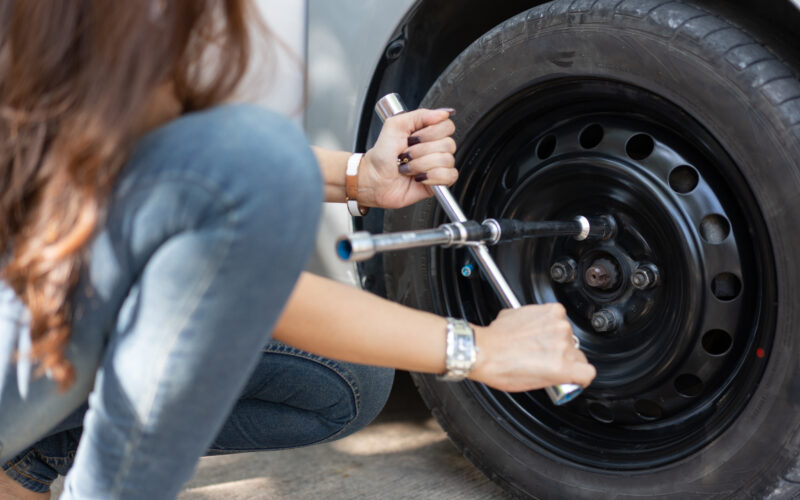Car maintenance is something that often gets overlooked until a problem becomes unavoidable. Your tires are arguably the most important part of your car, but a deep automotive expertise isn’t needed to instantly assess some issues—like a flat tire. Sure, it may seem daunting, but you don’t have to be a mechanic to get this done. Below is a step-by-step guide that any moderately healthy adult can use to help them change a flat tire.
If You Encounter a Flat Tire When Driving, Get to a Safe Place
Walking outside to a flat tire in the safety of your driveway is the best way to find out you have one, but flat tires typically happen on the road. This means it’s essential to know what to do if a sudden blowout happens. Don’t worry about the tire just yet, as getting your car safely off the road should be your main concern. You should never stay on the road after sustaining a flat tire, and if you must, drive a short distance to get somewhere the damage to your tire can be safely assessed.
Take Inventory
You don’t have to keep a full toolkit with you to change your tire, but there are a few key items you should have on hand in your car at all times. Additionally, there are some items that, while not absolutely necessary, make the process of fixing a flat tire a bit easier.
Minimum Items Needed
- Jack
- Lug wrench
- Inflated-spare tire
Additional Items Worth Having
- Gloves
- Flashlight
- Tire gauge
- Wheel wedges
- Reflective triangles
- Vehicle owner’s manual
Time to Get to Work
After getting the tools needed and making sure again that you’re in a safe area, if you are changing your tire roadside, be sure to place your car in park and turn your hazard lights on.
Step One: Loosen Your Lug Nuts
Do not completely remove your lug nuts before your car is off the ground. They should be loosened to hand tightness.
Step Two: Raise Your Car off the Ground
Next, place your jack under the metal frame of the car, which is normally right behind a front tire or to the front of a rear tire. Never place your jack in contact with the plastic trim. If available, consult your vehicle owner’s manual.
Step Three: Remove Your Lug Nuts
Once your tire is no longer touching the ground, completely remove your lug nuts but, be sure to keep them close at hand.
Step Four: Remove Your Flat Tire and Mount Your Spare
Gripping your tire by the threads, pull it towards you and free it from the hub. Then place your spare tire on the hub, aligning the rim with the lug bolts.
Step Five: Hand Tighten the Lug Nuts
Ensure the spare is pressed flat against the hub and hand-tighten your lug nuts. Do not use your lug wrench while your car is on the jack.
Step Six: Lower Your Car and Tighten the Lug Nuts
Next, bring your car just low enough for your spare tire to touch the ground. Using your lug wrench, begin to tighten your lug nuts by alternating between every other lug nut. Repeat this process by tightening the remaining alternate lug nuts you didn’t tighten on your initial pass.
Step Seven: Completely Lower Your Car
After all of your lug nuts have been tightened, completely lower your car to the ground and remove the jack. Use your lug wrench to give each lug nut a quick turn to ensure they’re on tightly.
Step Eight: Pack up and Drive Safely to the Nearest Tire Repair Specialist
Be sure to stow your flat tire along with all of your tire repair tools and gear before driving your car. Be mindful that if your replacement tire isn’t full size, most spare tires are not designed for high speeds or long-term use. It’s important to take your car to the nearest tire repair shop for an inspection from a professional and replace your tire if you’re driving on a spare. If the damage to your stowed flat tire isn’t too substantial, it could possibly be repaired.
To see a video of what we’ve covered above, watch this.
Don’t feel comfortable changing your tire? Florida Farm Bureau Insurance offers auto coverage that’ll help when you need it most. Including up to $125 coverage if your vehicle becomes mechanically disabled. Learn more by contacting a local Farm Bureau Insurance agent using our Agent Finder.

